Introduction
In the vast culinary landscape, where dishes from every corner of the globe intertwine to create a tapestry of flavors, one might overlook the humble yet versatile ingredient known as seaweed. Specifically, when transformed into thin, delicate strands akin to noodles, seaweed—often in the form of kelp or other edible seaweed varieties—can become a delightful and nutritious addition to any meal. Stir-frying seaweed noodles, or seaweed “silk” as they are sometimes called, is a technique that elevates this aquatic delicacy to a gourmet experience. This comprehensive guide aims to demystify the process, offering insights into selecting the right seaweed, preparing it perfectly, and stir-frying it to achieve a dish that is both visually appealing and bursting with flavor.
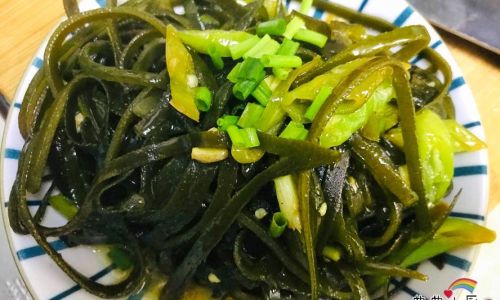
Chapter 1: Understanding Seaweed Noodles
Before diving into the stir-frying process, it’s crucial to understand what seaweed noodles are and their nutritional benefits. Seaweed noodles are made from various types of seaweed, primarily kelp, which is rich in iodine, vitamins, minerals, and antioxidants. They are low in calories and high in dietary fiber, making them an excellent choice for those seeking a healthy diet.
Types of Seaweed Noodles:
- Kelp Noodles: These are the most common type, characterized by their translucent appearance and slightly chewy texture.
- Agar-Agar Noodles: Made from red algae, these noodles are often used in vegetarian and vegan dishes due to their gel-like consistency when cooked.
- Hijiki Noodles: Darker in color and slightly salty, hijiki noodles are rich in minerals like calcium and iron.
- Wakame Noodles: These are lighter in color and texture, often used in soups and salads but can also be stir-fried.
Nutritional Benefits:
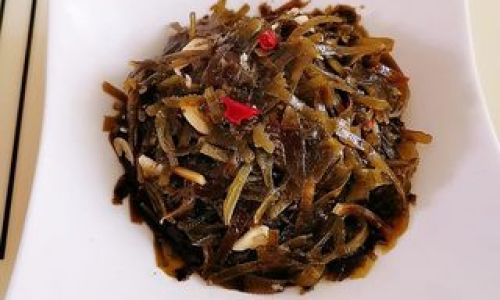
- Iodine: Essential for thyroid health.
- Antioxidants: Help combat oxidative stress and inflammation.
- Fiber: Promotes digestive health.
- Low in Calories: Ideal for weight management.
- Vitamins and Minerals: Rich in vitamins A, C, E, and minerals like potassium, magnesium, and calcium.
Chapter 2: Selecting and Preparing Seaweed Noodles
The quality of your final dish largely depends on the quality of the ingredients you start with. Here’s how to select and prepare seaweed noodles for stir-frying.
Selecting Seaweed Noodles:
- Check the Label: Ensure the package indicates that the noodles are made from pure seaweed without added preservatives or artificial ingredients.
- Appearance: Look for noodles that are evenly textured and free from any visible impurities.
- Smell: Fresh seaweed noodles should have a mild, oceanic aroma. Avoid those with a strong, fishy smell as they may be stale.
- Brand Reputation: Research brands known for their commitment to sustainability and quality.
Preparing Seaweed Noodles:
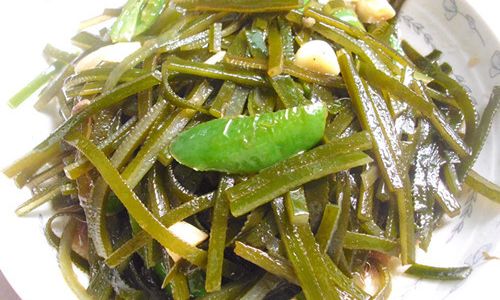
- Soaking: Most seaweed noodles come dried. To rehydrate them, soak them in cold water for about 10-15 minutes, or until they reach your desired texture. Avoid using hot water, as it can make the noodles overly soft and mushy.
- Rinsing: Once soaked, rinse the noodles under cold running water to remove any excess salt or impurities.
- Draining: Pat the noodles dry using a clean kitchen towel or paper towels. Excess water can cause the noodles to steam rather than stir-fry, leading to a soggy texture.
Chapter 3: The Stir-Frying Technique
Stir-frying seaweed noodles is an art that balances high heat, rapid cooking, and the perfect blend of ingredients. Here’s a step-by-step guide to achieving a delicious stir-fry.
Essential Equipment:
- Wok or Large Frying Pan: A wide, flat-bottomed wok or frying pan allows for even heat distribution and easy tossing of ingredients.
- Spatula or Wooden Spoon: A sturdy spatula or wooden spoon is ideal for stirring and tossing the noodles without breaking them.
- High-Heat Oil: Choose an oil with a high smoking point, such as avocado, peanut, or grapeseed oil, to ensure it doesn’t burn at high temperatures.
Ingredients for Stir-Fry:
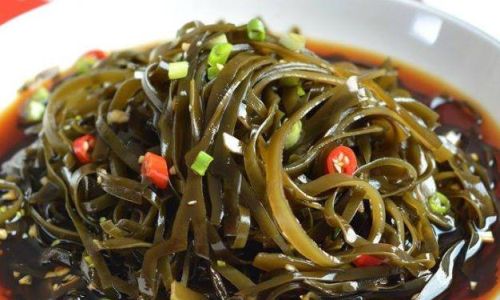
- Seaweed Noodles: Prepared as per the instructions above.
- Vegetables: A mix of bell peppers, carrots, broccoli, snap peas, or any other vegetables you prefer. Cut into bite-sized pieces for even cooking.
- Aromatics: Garlic, ginger, and scallions add depth of flavor.
- Sauce: A homemade stir-fry sauce combining soy sauce, sesame oil, rice vinegar, honey or maple syrup for sweetness, and a touch of cornstarch for thickening.
- Protein (Optional): Chicken, tofu, shrimp, or beef can be added for a more filling dish.
- Garnishes: Sesame seeds, chopped green onions, or a drizzle of chili oil for extra flavor.
Step-by-Step Stir-Fry Process:
- Heat the Pan: Place your wok or frying pan over high heat and add a generous amount of oil. Allow it to heat up until it shimmers but not smokes.
- Aromatics: Add minced garlic, grated ginger, and sliced scallions. Stir-fry for about 30 seconds until fragrant but not burnt.
- Vegetables: Add your prepared vegetables to the pan. Stir-fry for 2-3 minutes, tossing frequently to ensure even cooking. The vegetables should still have a bit of crunch.
- Protein (if using): Push the vegetables to the side of the pan and add your protein. Cook for another 2-3 minutes, stirring occasionally, until the protein is cooked through.
- Seaweed Noodles: Add the drained seaweed noodles to the pan. Stir-fry for another 1-2 minutes, gently tossing to combine with the vegetables and protein. Be careful not to overcook the noodles, as they can become mushy.
- Sauce: Pour the prepared sauce over the stir-fry and toss quickly to coat all ingredients evenly. Cook for another minute, allowing the sauce to thicken slightly and adhere to the noodles and vegetables.
- Garnish and Serve: Remove the stir-fry from heat and transfer to a serving dish. Garnish with sesame seeds, chopped green onions, or a drizzle of chili oil as desired.
Chapter 4: Tips and Tricks for Perfect Stir-Frying
Mastering the stir-fry technique takes practice, but these tips can help you achieve a restaurant-quality dish right at home.
- High Heat: Stir-frying requires high heat to create that signature seared flavor and texture. Ensure your pan is hot before adding oil and ingredients.
- Don’t Crowd the Pan: Overfilling the pan will lower the temperature and cause steaming rather than stir-frying. Cook in batches if necessary.
- Constant Stirring: Stir-frying is about rapid cooking, so keep stirring or tossing the ingredients to ensure even cooking and prevent burning.
- Taste and Adjust: Always taste your sauce before adding it to the stir-fry. Adjust sweetness, saltiness, and acidity to your preference.
- Use Fresh Ingredients: Fresh vegetables and high-quality seaweed noodles make a significant difference in the final dish.
- Experiment with Flavors: Stir-fries are highly adaptable. Feel free to experiment with different spices, herbs, and sauces to suit your taste.
Chapter 5: Variations and Creative Ideas
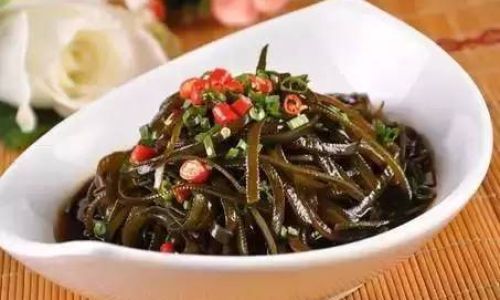
Stir-frying seaweed noodles doesn’t have to be a one-size-fits-all experience. Here are some creative variations to inspire your culinary adventures.
- Thai-Inspired Stir-Fry: Add coconut milk to your sauce for a creamy texture and incorporate Thai spices like lemongrass, kaffir lime leaves, and fish sauce.
- Korean Bibimbap: Serve your stir-fried seaweed noodles over a bed of rice with a fried egg, gochujang (chili paste), and a variety of banchan (side dishes).
- Japanese-Style Yakisoba: Use a soy-based sauce with a touch of mirin and dashi for a savory-sweet flavor profile, and top with beni shoga (pickled ginger) and aonori (seaweed flakes).
- Vegetarian Delight: Load up on a variety of colorful vegetables, tofu, and tempeh for a hearty, plant-based meal.
- Cold Stir-Fry Noodles: For a refreshing summer dish, prepare your stir-fry as usual but serve it chilled, perhaps with a drizzle of lime juice and a sprinkle of fresh cilantro.
Conclusion
Stir-frying seaweed noodles is a delightful way to incorporate this nutritious and versatile ingredient into your diet. With the right techniques, ingredients, and a willingness to experiment, you can create dishes that are not only healthy but also bursting with flavor and creativity. Whether you’re looking for a quick weeknight meal or an impressive dinner party dish, seaweed noodles offer a world of culinary possibilities. Happy stir-
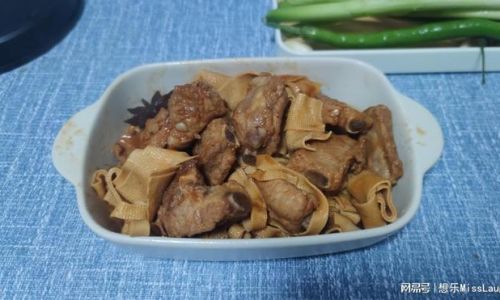
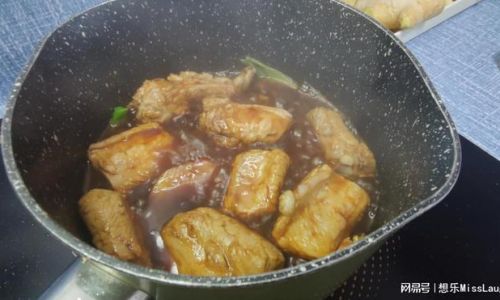




0 comments